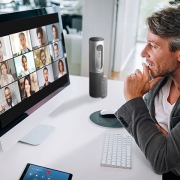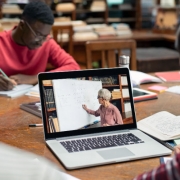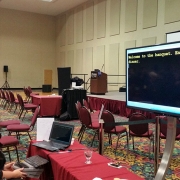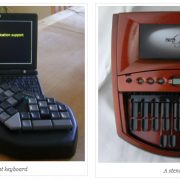Blog
How a business can get the most out of lockdown with live captioning
/0 Comments/in Live captioning services /by garyirelandWell, unfortunately, it looks like there’s a second lockdown on the way.
While rules are different across each member nation of the UK, the end result is the same; stay home if you can.
For millions that means working from home, with many people just beginning to return to work after the first lockdown.
But for businesses, it represents an opportunity to learn from their mistakes the first time round.
With Zoom meetings, Skype calls, and online conferences taking over the business world, it makes sense to get the most out of a bad situation by implementing live captioning. Read more →
3 reasons why your Zoom meeting should have live captions
/0 Comments/in Live captioning services /by garyirelandThe Covid-19 pandemic took the world by surprise, with practically everything about modern life changing as a result.
Some things that happened were obvious, such as the airlines having a hard time staying afloat with all flights being grounded. But other things happened that no one expected. Read more →
3 places live captioning should be used
/0 Comments/in Live captioning services /by garyirelandLive captioning delivers an inclusive experience for the deaf, hard of hearing, and those who have English as a second language.
As a person is speaking, a speech-to-text-reporter (STTR) types out verbatim what is being said, with the transcript appearing on a screen for everyone to read.
The simple solution never interferes with what’s being said, while at the same time helps keep everyone in the loop with what’s going on.
Below are the three main places where live captioning should be used. Read more →
What the best captioning companies all have in common
/0 Comments/in Live captioning services /by garyirelandCaptioning companies solve particular and distinct problems, so the market for them is relatively small. But like most things in life, there is a range of professionalism, competence, and quality, even within this small industry.
Good captioning companies get the job done, but great captioning companies go above and beyond. To spot one of the great ones, you need to look at the following three things… Read more →
Live Captioning for Conferences, Universities, and Learning Providers
/0 Comments/in Diversity and inclusion, Live captioning services /by garyirelandWith the Covid-19 pandemic showing no signs of going away, our “new normal” will involve social distancing, greater hygienic practices, and a lot more people working from home or online.
Unfortunately, these new norms will create even greater difficulties for deaf and hard of hearing people.
The answer may lie in live captioning. Read more →
Live captioning for education and higher learning
/0 Comments/in Live captioning services /by garyirelandFor deaf and hard of hearing students, lectures can be more than a challenge.
It’s difficult enough trying to hear someone in a crowded lecture hall, but add in other factors like background noise, low-quality microphones, or difficult subject matter, and even those without hearing problems struggle.
Luckily, there is a simple solution to the problem – live captioning. Read more →
Stenographer, palantypist, and transcriptionist – what’s the difference?
/1 Comment/in Live captioning services /by garyirelandWhen you think of a stenographer, you probably picture someone sitting in a courtroom, frantically typing out everything that’s being said, but this is just a simplified version we see on TV.
In reality, it’s more complicated than that, and once people start using words like typist, palantypist, and transcriptionist, then things really start to get confusing. Read more →







